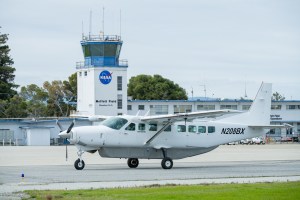3 min read
Collaboration Overview
The team's vision is to accelerate the transformation of the national airspace system and operations through the development of data-driven digital services for both conventional and emergent operations. In addition, the Digital Information Platform (DIP) sub-project is executing a series of operational evaluations with industry partners to test and validate these services. Collaboration with the aviation industry, including airlines and service providers, as well as the Federal Aviation Administration is essential to accomplish the vision.
FY22-25: Pre-Departure Rerouting

The pre-departure rerouting service uses a set of pre-approved departure routes and enables flight operators and air traffic control to coordinate an alternate route for delayed flights. The tool has been successfully deployed in the live environment in north Texas, where these reroutes resulted in off/in delay savings as well as reductions in fuel consumption. Additional benefits were also observed at fleet-wide and airspace levels. Building on this success, the service has been deployed in the Houston area to evaluate scalability and adaptability.
FY23-27: Oceanic Flight Efficiency

The oceanic flight efficiency operational evaluation continues to focus on single flight operations and adds integrated airborne trajectory negotiations in oceanic airspace in addition to pre-departure rerouting capability. This enables flight operators to request new routes for use cases including, but not limited to, altitude changes, convective weather avoidance, turbulence avoidance, and other hazards. This concept will be implemented as part of the Flow & Flight Information for a Collaborative Environment (FF-ICE), as mandated by the International Civil Aviation Organization (ICAO) and the United States' Common Support Service - Flight Data (CSS-FD), which is the FAA's implementation of FF-ICE by the FAA in the United States. This evaluation will help define the future of trajectory management requirements at an international level.
FY24-28: Fleetwide Disruption Management

Built upon those capabilities demonstrated in single flight operation through both pre-departure rerouting and oceanic flight efficiency evaluations, fleetwide disruption management showcases the ability to manage fleetwide irregular operations in an efficient manner. This evaluation focuses on helping stakeholders both anticipate future irregular disruptions and recover from ongoing ones. Large-scale disruptions of interest include, but are not limited to, weather events that affect significant portions of the airspace and space launch events.
FY25-30: Connected Flight Deck

The connected flight deck evaluation serves as a capstone project, showcasing the full range of capabilities developed through the previous operational evaluations to enable end-to-end trajectory rerouting across operators, service providers, and air traffic management system. This operational demonstration will also exhibit an end-to-end digital workflow and introduce automation into the traffic management decision making process, integrating 4D trajectory optimization to manage aircraft with a wide range of performance characteristics. The goal is to reduce the workload of key decision makers while maintaining situational awareness across the operation.









